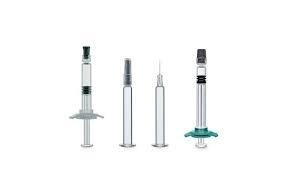Prefilled syringes have revolutionized the pharmaceutical and healthcare industries by offering convenience, reducing contamination risks, and improving drug delivery efficiency. However, despite their numerous advantages, several market inhibitors continue to restrain their widespread adoption. Factors such as regulatory challenges, manufacturing complexities, high costs, and compatibility issues pose significant barriers to growth in this segment.
1. Stringent Regulatory Requirements One of the most significant barriers to the expansion of the prefilled syringes market is the stringent regulatory landscape. The approval process for prefilled syringes is complex and requires compliance with multiple international standards, such as the FDA (U.S. Food and Drug Administration), EMA (European Medicines Agency), and ISO 11040. These regulations ensure safety, sterility, and material compatibility, but they also lead to extended approval timelines and increased costs for manufacturers. Any deviations in compliance can result in product recalls, penalties, and reputational damage.
2. High Manufacturing Costs and Technical ComplexitiesManufacturing prefilled syringes is more complex and cost-intensive than traditional vial-based drug delivery systems. The production process involves precision engineering, specialized materials, and stringent quality control measures to ensure product sterility and integrity. Additionally, the use of advanced materials such as cyclic olefin polymers (COP) or glass further elevates production costs. Companies must invest heavily in research and development (R&D) to innovate and improve manufacturing efficiency, which often becomes a financial burden, especially for smaller market players.
3. Compatibility Issues with Biologics and DrugsAs pharmaceutical companies increasingly develop biologics and high-viscosity drugs, compatibility with prefilled syringes has become a growing concern. Certain biologic formulations are sensitive to siliconization, extractables, and leachables, which may alter drug efficacy or trigger adverse reactions. Material interactions between the drug and the syringe components (barrel, plunger, needle) can lead to stability issues, limiting the suitability of prefilled syringes for a broad range of medications. Addressing these challenges requires further R&D investment, making market penetration difficult.
4. Supply Chain Disruptions and Material ShortagesThe COVID-19 pandemic highlighted vulnerabilities in global supply chains, affecting the availability of critical raw materials used in syringe manufacturing. Shortages of medical-grade plastics, glass, and other essential components have led to production delays and increased costs. Additionally, geopolitical tensions and trade restrictions impact the steady supply of materials, further complicating market expansion. The dependency on specialized suppliers and fluctuating raw material prices create uncertainty for manufacturers and healthcare providers alike.
5. Risk of Needlestick Injuries and Safety ConcernsWhile prefilled syringes enhance patient safety by reducing dosing errors, they also pose a risk of needlestick injuries if not handled properly. Healthcare professionals must be adequately trained to use prefilled syringes safely, particularly in high-pressure clinical environments. The development of needle safety mechanisms, such as retractable needles and passive safety systems, adds to production costs and design complexities, which may deter smaller manufacturers from entering the market.
6. Market Entry Barriers for New PlayersEstablished pharmaceutical companies dominate the prefilled syringes market, making it challenging for new entrants to compete. High initial investments, rigorous regulatory approvals, and the need for advanced manufacturing infrastructure create significant entry barriers. Additionally, strategic partnerships between major players and healthcare providers further limit opportunities for small and mid-sized firms to establish themselves in the industry. The monopolization of key technologies and intellectual property protection by leading companies adds another layer of difficulty for new businesses trying to gain market traction.
Conclusion Despite the growing demand for prefilled syringes in drug delivery systems, multiple market inhibitors continue to pose challenges for manufacturers, healthcare providers, and investors. Regulatory complexities, high production costs, drug compatibility concerns, supply chain disruptions, and safety risks all contribute to slowing down market growth. Addressing these challenges requires industry-wide collaboration, innovation, and strategic investments to ensure that prefilled syringes can reach their full potential in enhancing patient care and drug administration efficiency.
Prefilled Syringes Market Inhibitors: Exploring Safety Concerns, Compatibility Issues, and Supply Chain Disruptions







